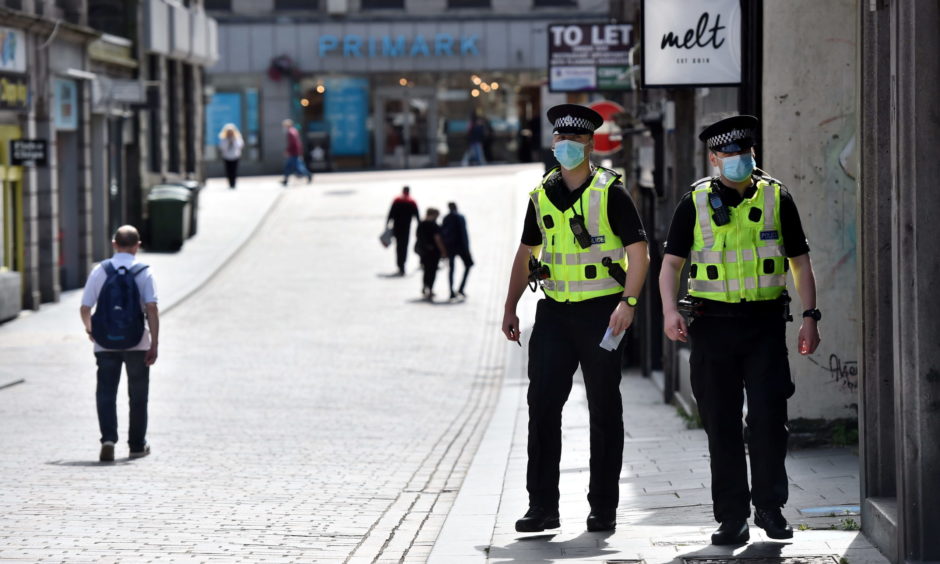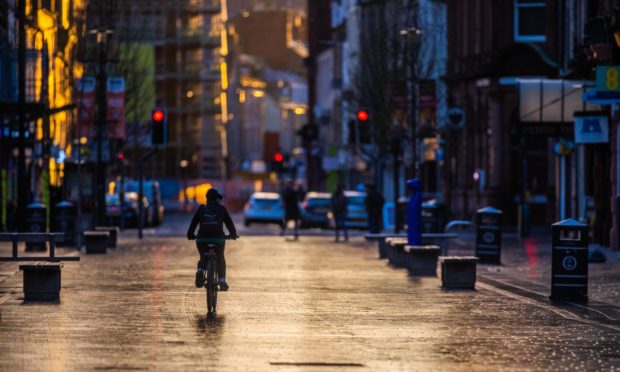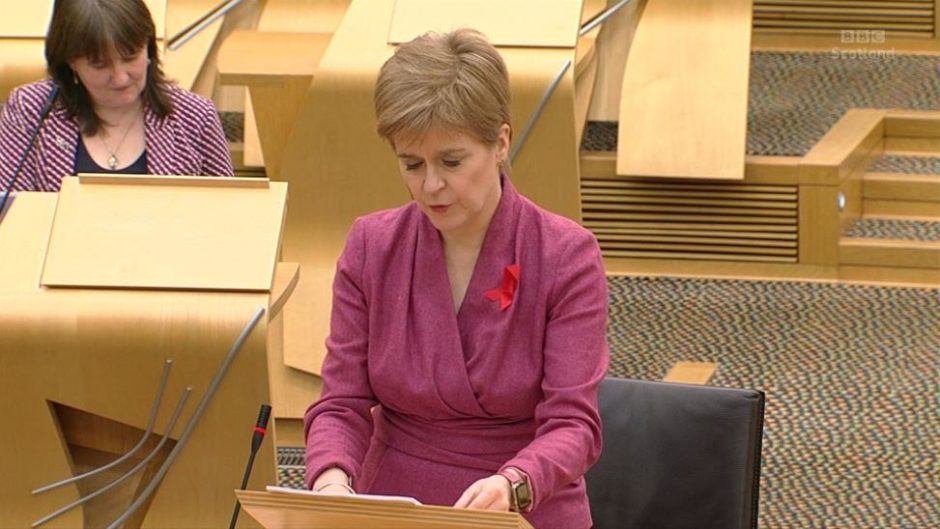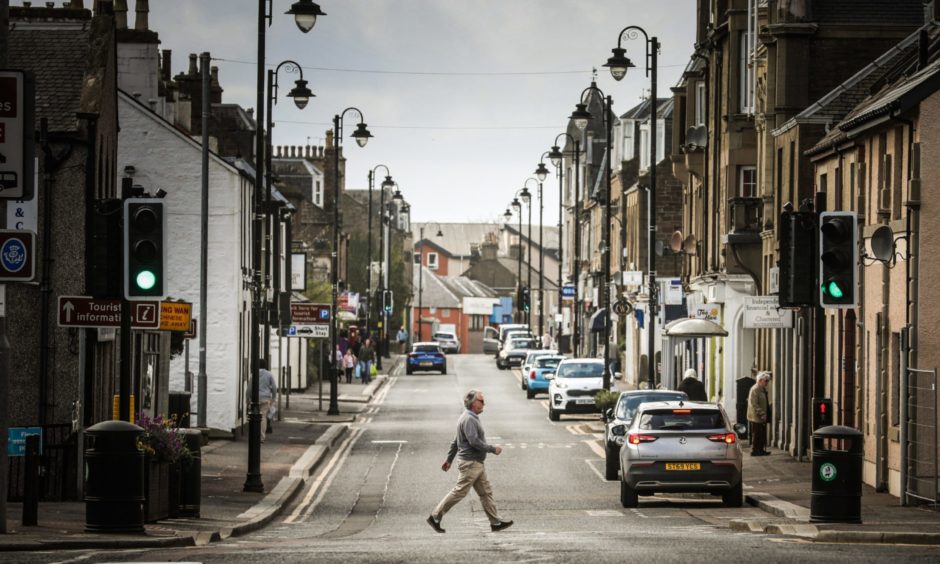There have been no changes to any coronavirus alert levels in Scotland this week, despite concerns about a number of areas.
Speaking in the Scottish Parliament on Tuesday, Nicola Sturgeon confirmed there would be no alterations to the current system being used to combat the spread of coronavirus across the country.
It means the whole of Tayside and Fife will remain in level three restrictions, while Aberdeen and Aberdeenshire will stay in level two, and the Highlands, Moray, Orkney, Shetland and the Western Isles will all be in level one.
Ms Sturgeon told MSPs that coronavirus cases and hospitalisation numbers are declining across the country but said that the Scottish Government would continue “to err on the side of caution”.
Aberdeen and Aberdeenshire will stay under level two rules despite concerns about the rising infection rate and case numbers being higher there than in neighbouring Angus.
Ms Sturgeon has asked senior health officials to consider the situation in the north-east “in more depth” in the coming days, and did not rule out placing both areas in a higher tier before next week “if the situation merited that”.
She said: “We have been looking and will continue to look carefully in the days to come at both Aberdeen and Aberdeenshire.
“Cases in both these local authority areas have increased quite sharply in the past week, by 68% in Aberdeen and 42% in Aberdeenshire.
“That means their cases numbers – although it is important to stress that in both areas their case numbers are below the national average – are nevertheless higher than in some level three areas; for example, Angus.
“Case positivity has also increased in both areas.”
Ms Sturgeon had previously raised concerns about Perth and Kinross, along with Clackmannanshire, but said the numbers in both these areas have stabilised “and at this stage are improving”.
The SNP leader said next week’s review of tiers would be “more substantial”, with fresh decisions being made on the levels for each area moving forward.
How the tiers are decided
The weekly review is based on five key indicators: cases per 100,000 people, test positivity, the forecasted cases per 100,000, the forecasted number of people in hospital, and the forecasted number of people in intensive care.
For both Aberdeen and Aberdeenshire, the case numbers and positivity rose again and were described as a “cause for concern”. The case positivity rate rose by 1.9 in Aberdeen and 1.4 in Aberdeenshire, against a Scotland average decrease of 0.5.
It means both areas moved from ‘low’ to ‘moderate’ in weekly cases per 100,000 and ‘moderate’ to ‘high’ in case positivity. There were also outbreaks in each area that are being managed locally and may have contributed to the observed increases.
Of all the areas in level two, Aberdeen and Aberdeenshire had the highest case and positivity rates by some margin.
 Angus saw some improvement in case numbers in test positivity over the week but there has been no consistent downward trend and it is still too early to say if the move to level three has had the desired effect.
Angus saw some improvement in case numbers in test positivity over the week but there has been no consistent downward trend and it is still too early to say if the move to level three has had the desired effect.
Early signs suggest a stabilising of the numbers, with cases per 100,00 down 19% and case positivity falling by 0.5.
There was some improvement in case numbers and positivity rates over the week in Dundee and Fife but not enough to shift the levels. Cases per 100,000 fell by 18% in Dundee and 10% in Fife, while case positivity dropped by 0.5 and 0.1, respectively.
Perth and Kinross has not yet seen consistent progress, despite its cases per 100,000 dropping by 15% and case positivity being down by 0.1 on the previous week.
Cases remain low in the Highlands and Moray, and ministers are considering whether these areas should follow Scotland’s island communities in allowing up to six people from two households to meet indoors – possibly as early as next week.
Cases per 100,000 fell by 16% in the Highlands, with case positivity staying the same as the previous week, and 47% in Moray, with positivity dropping by 0.5.
Numbers also continue to be low in Orkney, Shetland and Western Isles (Na h-Eilean Siar), and will be monitored to see if recent changes to indoor socialising rules have any impact in the weeks ahead.
There was no change in cases per 100,000 or case positivity in Orkney, whereas in Shetland cases fell by 33% and positivity rose by 0.2. The Western Isles saw cases rise to 11 per 100,000, from none the previous week, with positivity rising by 0.6.


